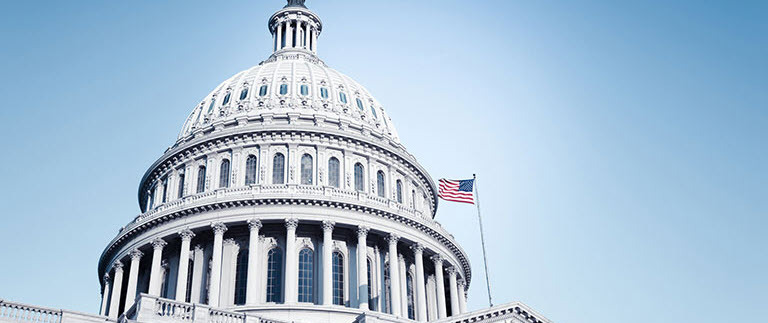How the ARPA Is Affecting the Way Employers Approach COBRA and ERTC

A $1.9 trillion government relief effort provides COBRA premium subsidies and extends the availability of employee tax credits, but some uncertainty remains among business leaders. This piece offers answers to questions asked during a recent webinar on COVID-19 legislative updates.
As part of the United States government's ongoing effort to help businesses weather the economic storm created by the novel coronavirus, Congress approved the American Rescue Plan Act of 2021 (ARPA), which provides approximately $1.9 trillion in relief. For employees who find themselves without insurance due to an involuntary separation or reduction in work hours, ARPA provides subsidies related to COBRA premiums. For those eligible, this subsidy covers their entire COBRA premiums from April 1, 2021 to September 30, 2021.
Here are some of the frequently asked questions and answers collated from a recent webinar featuring ADP leaders and legal professionals, who discussed legislative updates brought about by COVID-19.
FAQs concerning COBRA coverage
The following questions and answers can provide employers with insight into how to interpret and comply with the recent updates associated with COBRA coverage.
Q. Is there a standard letter for a 100% COBRA subsidy notice for a former employee? Who is responsible for the ARPA notices? Will COBRA Administrators send the three notices, or is it the employer's responsibility?
A. The Department of Labor issued model notices in early April, found at: https://www.dol.gov/agencies/ebsa/laws-and-regulations/laws/cobra/premium-subsidy. Generally, the employer is responsible for sending the new ARPA COBRA notices. Work with your COBRA vendor/administrator to determine what solution will be available.
Q. Is the COBRA subsidy is to be subsidized for the full 18 months?
A. The COBRA subsidy is available for coverage periods beginning April 1, 2021 and ending September 30, 2021.
Q. The COBRA subsidy is only intended for those who lost employment due to COVID-related reasons, correct?
A. No. An assistance-eligible individual who lost coverage due to involuntary termination or a reduction in hours and is still within their COBRA maximum period (18 months from the date of the qualifying event or loss of coverage, depending on the plan design) is eligible.
Q. Regardless of the size or type of your company, is the COBRA subsidy required by law?
A. With some exceptions, employers with 20 or more employees employed on a typical day in the previous calendar year are subject to the COBRA requirements, including the ARPA COBRA requirements.
Q. What if we "involuntarily terminated" an employee due to gross misconduct? Do they still get the COBRA subsidy?
A. DOL guidance was recently published to provide answers to this and many other questions related to COBRA subsidy eligibility. Visit https://www.dol.gov/agencies/ebsa/laws-and-regulations/laws/cobra/premium-subsidy.
Q. For those that are eligible within the 18 months of COBRA coverage, who have not elected but decide to do so due to the "extended election period," I understand the subsidy will apply from April to September 2021. However, will the terminated employee be required to pay the previous months to bring it current (so there is no gap)?
A. ARPA provides a second opportunity for an assistance-eligible individual who is still within their COBRA maximum period (18 months from the qualifying event or loss of coverage, depending on plan design) to prospectively elect COBRA continuation coverage.
Q. Do employers have to offer subsidized COBRA to employees terminated before April 1, 2021?
A. Yes, provided that the employee is an assistance-eligible individual.
Q. Are only involuntary terminations after April 1, 2021 eligible for the COBRA subsidy, or does it apply to all COBRA participants who involuntarily terminated employees who are currently still on COBRA?
A. An assistance eligible individual who lost coverage due to involuntary termination or a reduction in hours and is still within their COBRA maximum period (18 months from the date of the qualifying event or loss of coverage, depending on the plan design) is eligible.
Q. What happens if they haven't paid for COBRA coverage prior to April 1? Do we collect payment for that?
A. ARPA provides a second opportunity for an assistant-eligible individual who is still within their COBRA maximum period (18 months from the qualifying event or loss of coverage, depending on plan design) to prospectively elect COBRA continuation coverage.
Q. What if an employee had an involuntary termination in November and elected COBRA for November and December and then stopped. Since they are still within their 18 month time period, would they be able to re-enroll in Cobra and receive the subsidy?
A. Yes. An assistance eligible individual who lost coverage due to involuntary termination or a reduction in hours and is still within their COBRA maximum period (18 months from the date of the qualifying event or loss of coverage, depending on the plan design) is eligible.
Q. We are fully insured. Will we be requesting credits for COBRA subsidies or will our insurance companies be requesting them?
A. Employers should expect to claim the payroll tax credit and pay the plan or insurer the amount of the subsidy.
FAQs concerning the Employee Retention Tax Credit
Additionally, the ARPA also extended the relief available for employers by extending the employee tax credit under the Coronavirus Aid, Relief, and Economic Security (CARES) Act, known as the Employee Retention Tax Credit (ERTC). For 2020, the ERTC provided eligible employers with a credit against employment taxes of up to 50% of qualified wages, with a $10,000 wage cap and a $5,000 maximum tax credit per employee.
Q. Were the eligibility requirements for the ERTC changed with the ARPA?
A. The Consolidated Appropriations Act (12/28/2020) changed the eligibility to revenue declines of 20% rather than 50%.
Q. Is the retention credit calculated using gross or net pay? Are employers over 100 excluded from the credit altogether or just asking for it in advance?
A. Gross wages. Employers with more than 500 employees may not request advance payments.
Q. What are the comparison periods for the 20% gross receipts reduction with respect to ERTC?
A. Generally, 2021 calendar quarters are compared to the same quarter in 2019 to determine the revenue reduction, but there are exceptions for new businesses.
Q. If you didn't claim the ERTC in 2020 because you took the PPP can you retroactively take it for 2020?
A. Yes. The Consolidated Appropriations Act eliminated the previous restriction that PPP loan recipients were ineligible for ERC, retroactive to March 2020. Amend the affected 2020 Forms 941 to take the credit if you otherwise qualify.
Q. If we want to use the ERTC, but we got a PPP loan, do we have to retroactively provide proof that we had other sources of income to pay employees?
A. Yes. Essentially, you must be able to show revenue sources other than PPP loans to cover any wages that you use to qualify for ERTC. In other words, if you pay wages using PPP loan proceeds, you cannot take the ERC on those same wages.
ADP's compliance experts are dedicated to helping employers and HR leaders understand this complex legislative information as it develops.
To learn more about the COBRA premium assistance, ERTC and other aspects of the government's economic programs related to the virus, access our on-demand webinar, Special Edition: COVID-19 Legislative Updates – American Rescue Plan Act.



